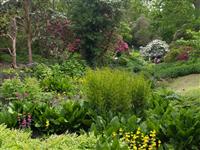
What do you need to start out in horticulture?
What qualifications do you need to be a Gardener?
What qualifications do you need to work in a nursery?
What do you need to learn to be a Horticulturist?
If you want a career in horticulture, this is one of the best starting points. The core units of this course will give you the skills and knowledge to start out in any field of horticulture. This Certificate was developed with a great deal of industry input and continues to be revised to ensure international relevance. The Certificate in Horticulture teaches you all the basics and more, it gives a very sound grounding for those already in the industry, those looking to enter the industry or for those with qualifications but with gaps in their learning. Be prepared to learn a lot!
Graduates from this 700 hour certificate have a history of outstanding career success. The course provides a very strong foundation in general horticulture (350 hours) as well as specialised training in a chosen area such as propagation, landscaping or organics. Whilst other certificates have degraded over the years and have less emphasis (particularly on science and plant knowledge), this has remained at a similar standard to training of the 1970's and 80's, but with up to date content.
Use the link below ('read more') to view more comprehensive details on this course.